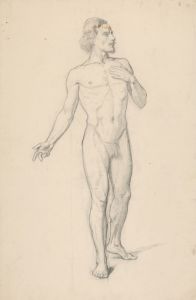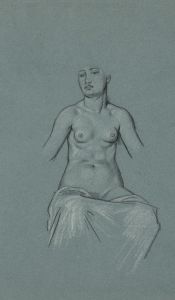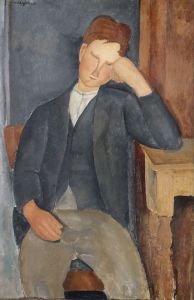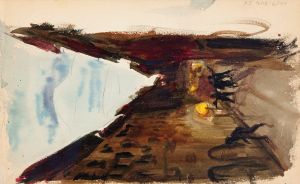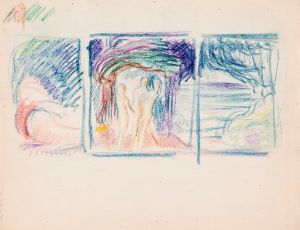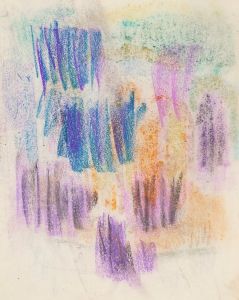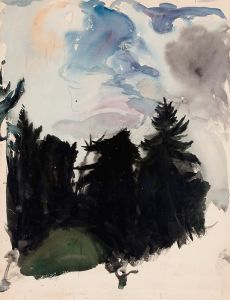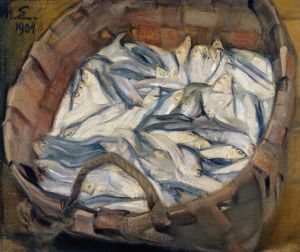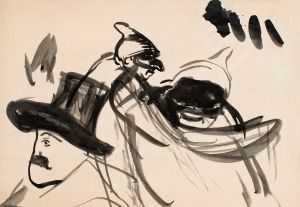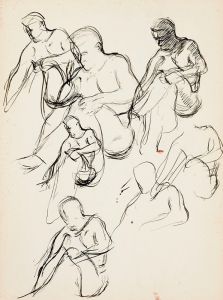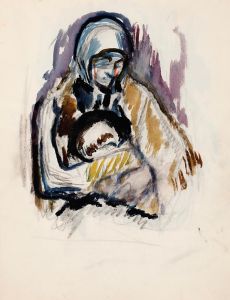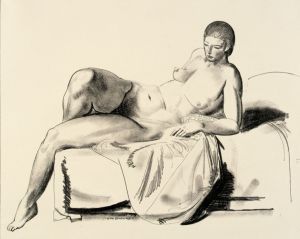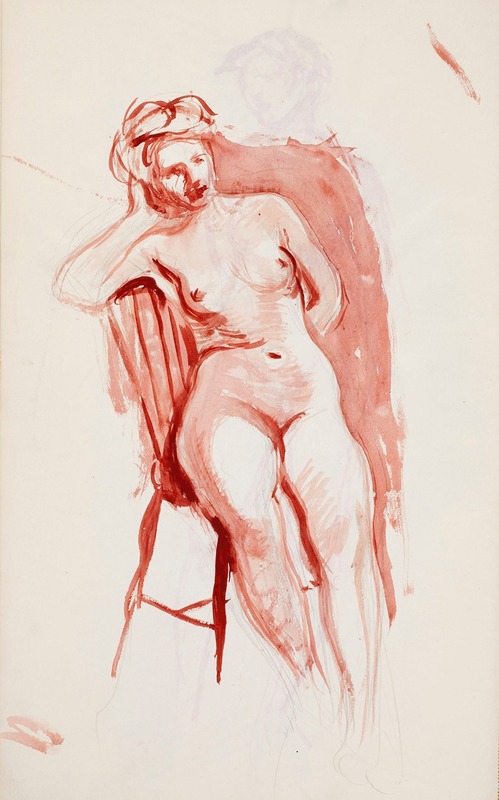
Istuva alaston malli
A hand-painted replica of Magnus Enckell’s masterpiece Istuva alaston malli, meticulously crafted by professional artists to capture the true essence of the original. Each piece is created with museum-quality canvas and rare mineral pigments, carefully painted by experienced artists with delicate brushstrokes and rich, layered colors to perfectly recreate the texture of the original artwork. Unlike machine-printed reproductions, this hand-painted version brings the painting to life, infused with the artist’s emotions and skill in every stroke. Whether for personal collection or home decoration, it instantly elevates the artistic atmosphere of any space.
Magnus Enckell's Istuva alaston malli (translated as Seated Nude Model) is a painting by the Finnish symbolist painter Magnus Enckell (1870–1925). Enckell is considered one of the most significant figures in Finnish art at the turn of the 20th century, known for his contributions to symbolism and his exploration of themes such as human emotion, spirituality, and the human form.
The painting, Istuva alaston malli, depicts a seated nude figure, rendered with simplicity and sensitivity. Enckell's approach to the human body in this work reflects his broader artistic philosophy, which often emphasized introspection and the inner life of his subjects. The composition is characterized by its restrained use of color and light, a hallmark of Enckell's early career, during which he was influenced by the symbolist movement and sought to convey mood and emotion through pared-down visual elements.
Magnus Enckell studied at the Finnish Art Society's Drawing School in Helsinki and later continued his education in Paris, where he was exposed to the works of symbolist artists and other contemporary movements. His time in Paris had a profound impact on his artistic development, and he began to experiment with themes of mysticism, mythology, and the human condition. Istuva alaston malli is an example of his focus on the nude figure, a subject he returned to frequently throughout his career.
The painting is notable for its quiet, contemplative atmosphere. The seated figure is presented in a naturalistic yet idealized manner, with an emphasis on the interplay of light and shadow on the body. Enckell's treatment of the nude was often seen as modern and progressive for his time, as he sought to depict the human form with honesty and dignity, free from the constraints of academic tradition.
While specific details about the creation date and current location of Istuva alaston malli are not widely documented, the work is representative of Enckell's broader oeuvre and his interest in exploring the human figure as a vessel for emotional and spiritual expression. Enckell's legacy as an artist lies in his ability to bridge the gap between realism and symbolism, creating works that resonate with both visual beauty and deeper meaning.
Magnus Enckell's contributions to Finnish art extend beyond his paintings; he was also an influential figure in the development of modern art in Finland. His works continue to be celebrated for their innovative approach and their ability to capture the complexities of the human experience.





